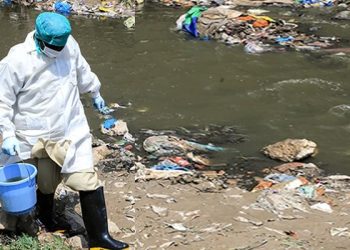Over 1,000 cases of a new coronavirus variant have been identified in the past few days in England, predominantly in the south of the country where it could be connected to a surge in cases, Health Secretary Matt Hancock said on Monday.
“We have identified a new variant of coronavirus, which may be associated with the faster spread in the southeast of England,” Hancock said in a statement to the parliament “Initial analysis suggests that this variant is growing faster than the existing variants,” he said.
“I must stress at this point that there is currently nothing to suggest that the variant is more likely to cause serious disease, and the latest clinical advice is that it’s highly unlikely that this mutation would fail to respond to a vaccine,” he added.
The World Health Organization is aware of a new variant of COVID-19 that has emerged in Britain, but there is no evidence the strain behaves differently to existing types of the virus, it said on Monday.
“We are aware of this genetic variant reported in 1,000 individuals in England,” the WHO’s top emergencies expert Mike Ryan told a news briefing in Geneva. “Authorities are looking at its significance. We have seen many variants, this virus evolves and changes over time.”
London will move into England’s highest tier of COVID-19 restrictions, the government said on Monday, citing increased infection rates that may be partly linked to a new variant of the coronavirus.
Earlier this month, the government implemented a three-tiered system of restrictions in England to try to keep a second wave of the virus under control after a month-long national lockdown. More than 40% of citizens were placed in the highest risk category.
However London, whose 9 million people and world-leading financial centre make it the engine of the British economy, is currently only in the middle tier of restrictions.
DEEPLY DISAPPOINTING
The main difference between England’s top alert levels is that bars and restaurants, which can stay open under certain conditions in Tier 2, must close their doors in Tier 3 and can only operate takeaway services.
There are also additional curbs on socialising in Tier 3, but workplaces and schools are told to remain open.
“Moving into Tier 3 before Christmas will be deeply disappointing for Londoners, and a terrible blow to the capital’s hospitality, leisure and cultural sectors,” said John Dickie, Director of Strategy and Policy at business campaign group London First.
London was one of the first parts of the country to be hit by the coronavirus during the initial peak between March and May, but until recently a second wave has been more concentrated in northern and central England.
Data published last week showed case rates per 100,000 people in London stood at 191.8, putting the city ahead of regions that have stricter rules in place, such as the West Midlands.
Based on that data, the government raised concerns about the spread of the virus in London schools and announced a programme of mass testing. Two London boroughs, Greenwich and Islington, have unilaterally decided to close their schools.


















































